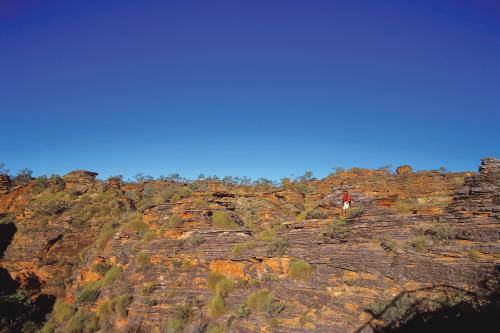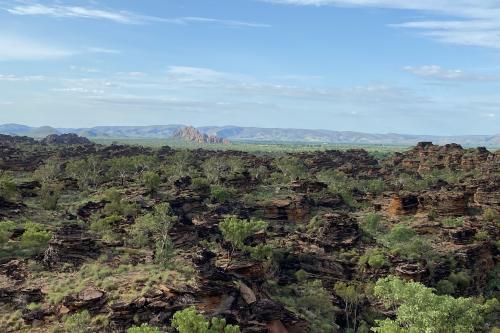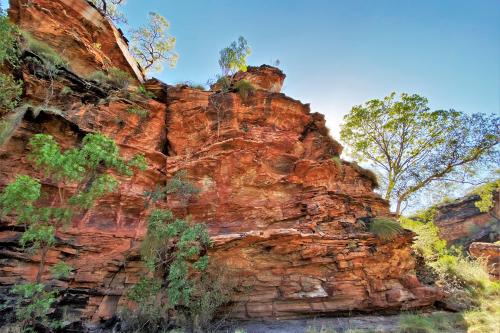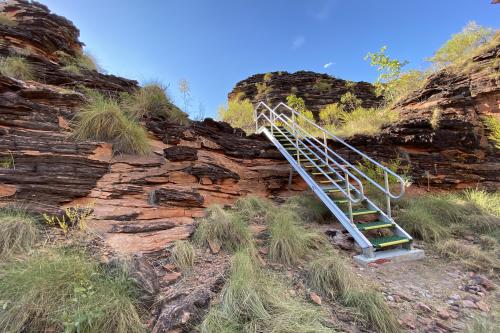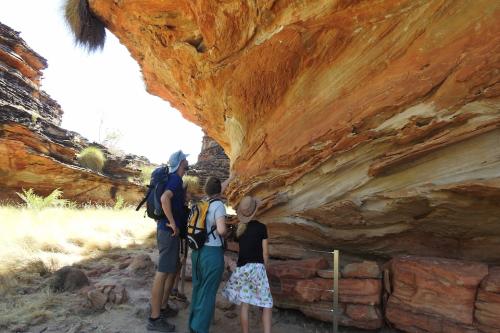About this park
The highlight of Mirima National Park is its spectacular natural rock formations. These colourful layered rocks are mesmerising with the changing light of day. Over 300 million years ago, this area was underwater, part of a prehistoric sea. The rocks you see at Mirima today are the layers of sandstone formed from sediments deposited by creeks and windblown sand.
We know that sandstone is fragile, so why hasn’t it been washed away by the tropical rains? A thin layer of black-green algae and lichens helps to protect the sandstone from weathering. If this layer is damaged though, the sandstone rapidly erodes away.
The park is a popular place for bushwalking, photography and nature watching. Choose one of the walk trails and start exploring. Avoid the heat of the day, the Kimberley is famous for being hot! Time your walk right and you can catch the perfect light of sunrise or sunset. The sandstone seems to come alive as it reflects the tones of the changing light of the Kimberley.
Mirima National Park is a culturally significant place for the local Miriwoong people. Aboriginal people have been coming here for thousands of years. They sheltered in the rocks and used the animals and plants in the area for food, medicine and tool making. Aboriginal people still hold ceremonies in special places in the park.
The rocky terrain and vegetation attract lots of wildlife. Keep your eyes peeled. See if you can spot wallabies or dingoes. Look out for crimson and double-barred finches, and white-quilled rock pigeons. Your binoculars will come in handy!
Mirima National Park has year-round appeal. It’s all about the rocks but you don’t need to be a geologist to enjoy this ancient landscape.
Review - Lovely NP close to town
Easy walk into this park, with well maintained walkways and descriptive signage. Worth the climb up to really appreciate the geological formations, quite remarkable. We went in the early morning so not too hot but I imagine it would be very hot during the day with limited shade. Cloud_Dreaming - Trip Advisor
Safety information
Plan when to visit. Read this safety information about bushwalking. Consider travelling with a personal location beacon (PLB). In the event you need to be rescued it could save your life!
Walking in the Kimberley is thirsty work - carry enough water so that you can drink 1 litre of water per person per hour.
When you are entering the Kimberley you are entering crocodile country. Two species of crocodile occur in Western Australia: the estuarine (or saltwater) crocodile and the freshwater crocodile. The estuarine crocodile is the largest living reptile and is considered to be a dangerous predator. Freshwater crocodiles are smaller and not as aggressive.
Crocs are common, crocs move around and crocs are deadly so Be Crocwise.
- Download the Crocodiles information guide.
- Pay attention to all warning signs, however just because a sign isn’t there doesn’t mean crocodiles aren’t present.
- If you are unsure don't swim, canoe or use small boats in estuaries, tidal rivers or pools and contact the nearest Parks and Wildlife office.
- If you see a crocodile showing signs of aggressive behaviour, OR is in the Kununurra Crocodile Control Zone, please contact the Parks and Wildlife Service office in Kununurra on (08) 9168 4200.
Gallery
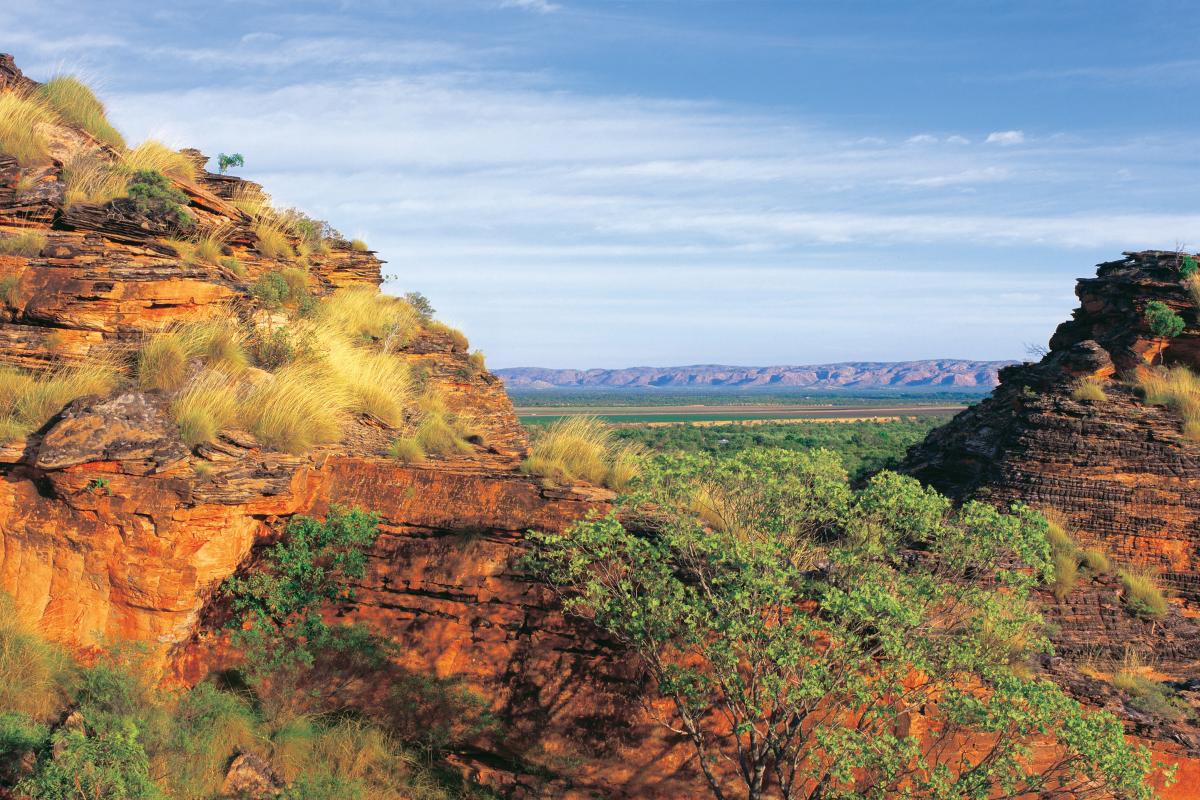
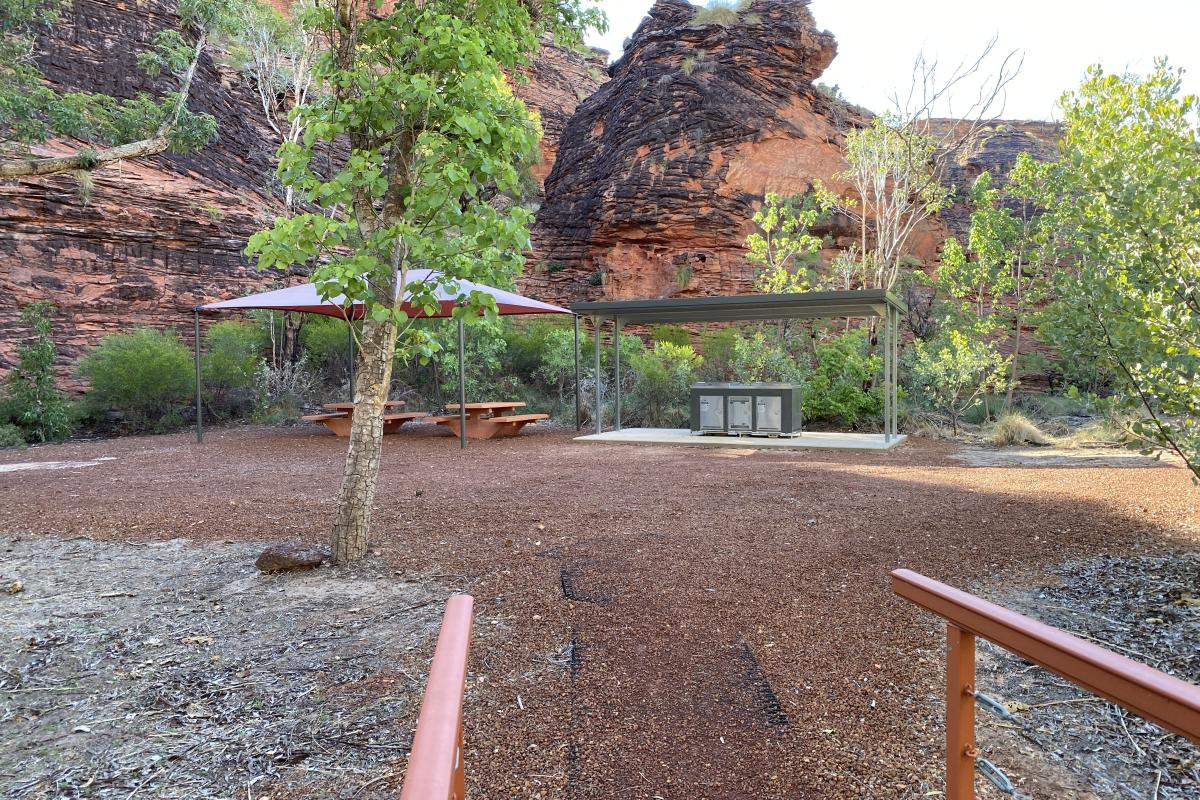

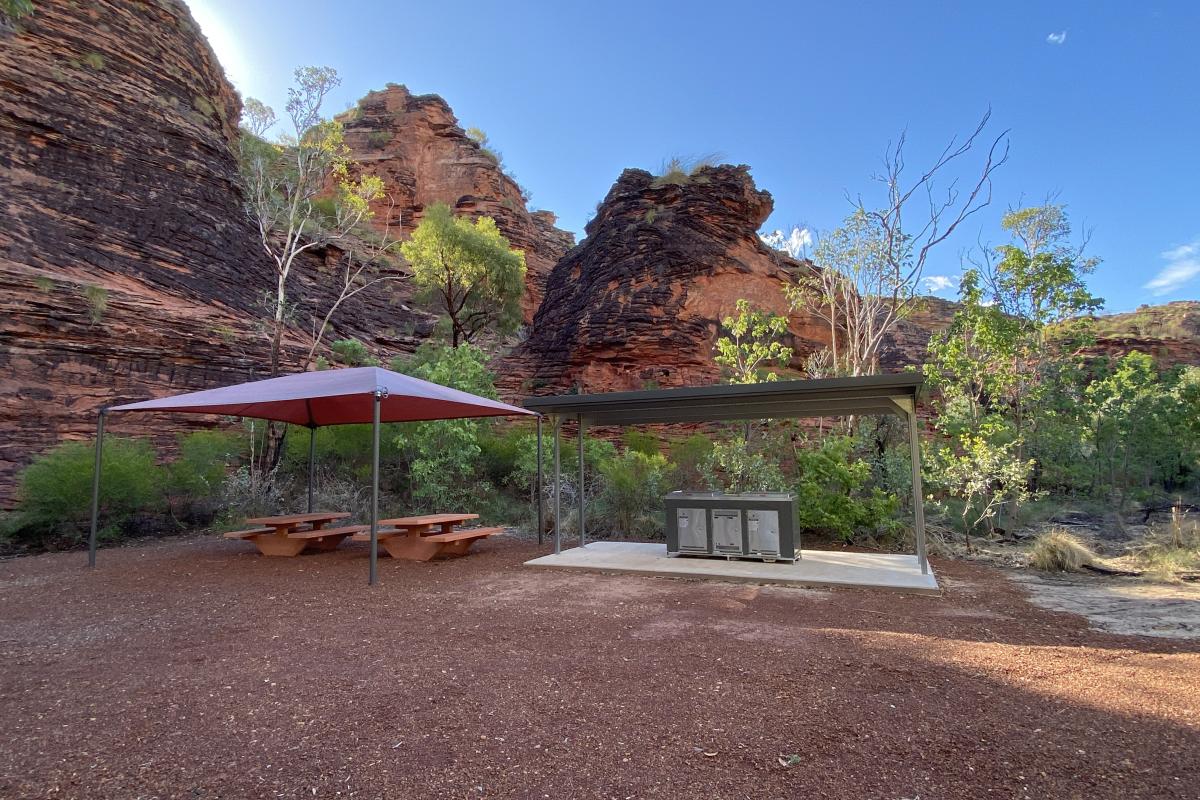
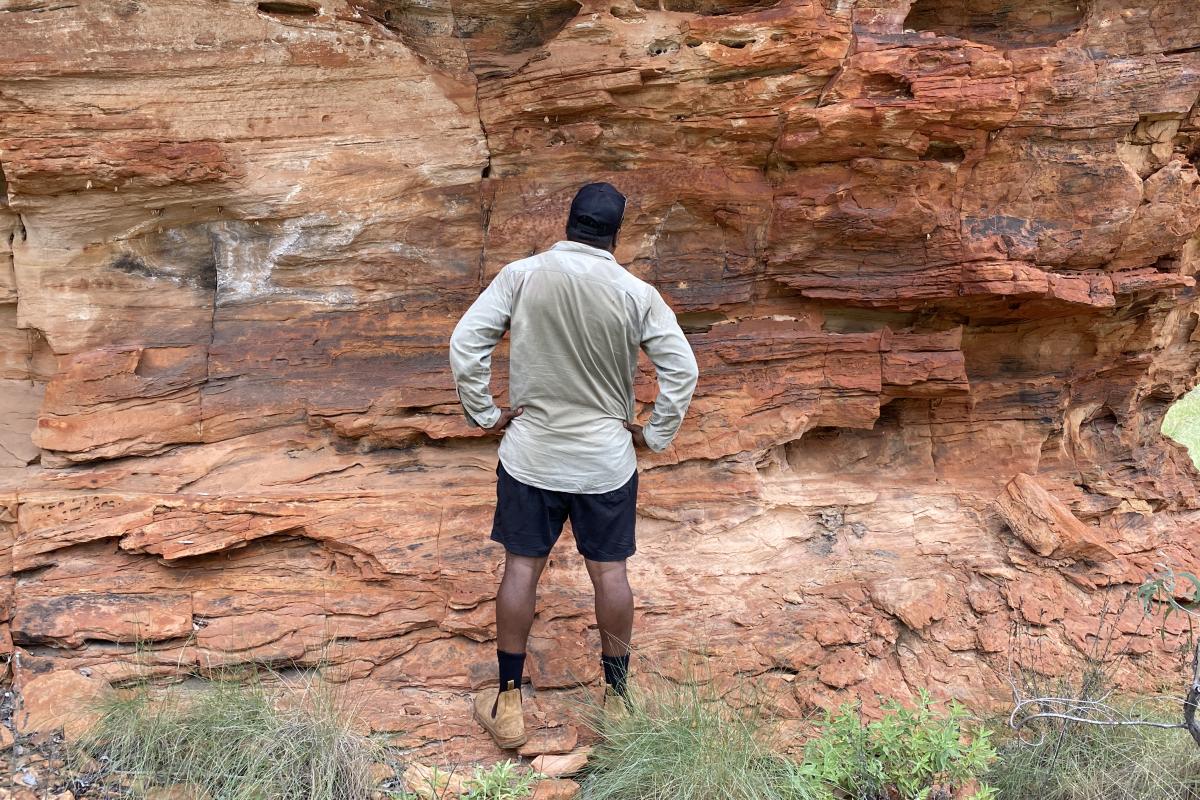
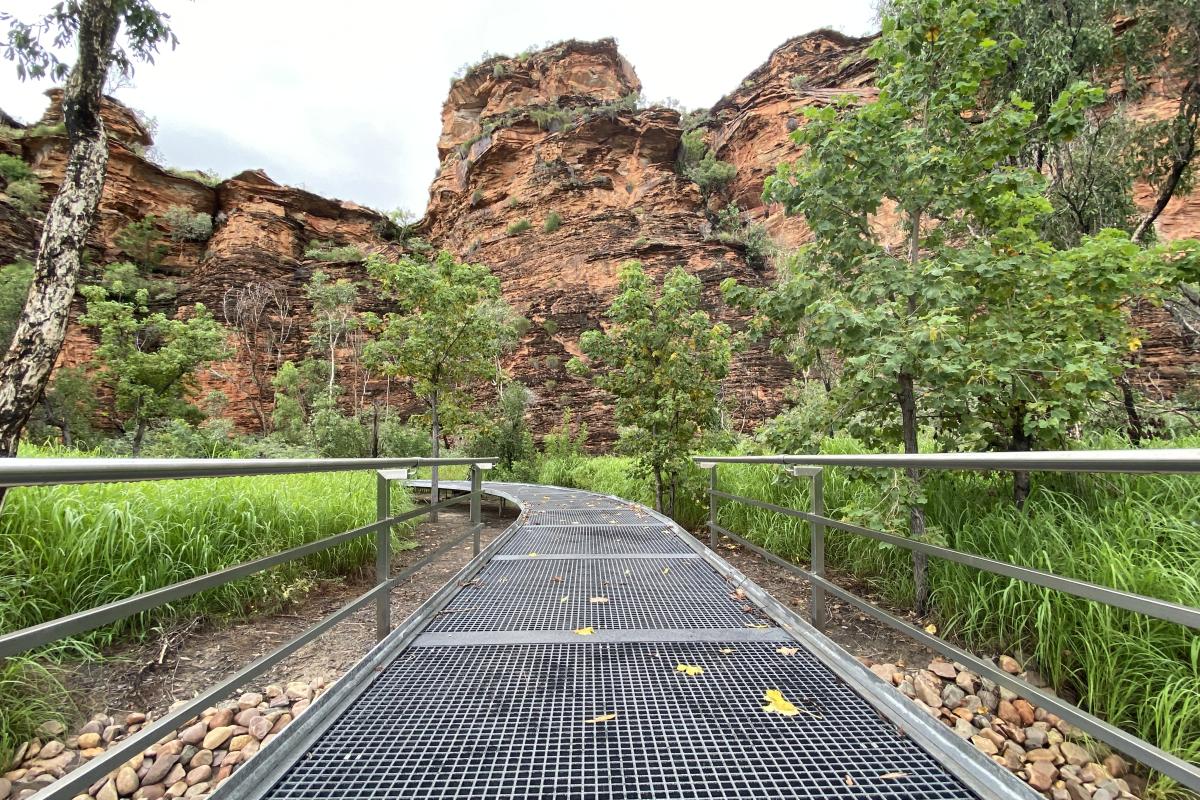
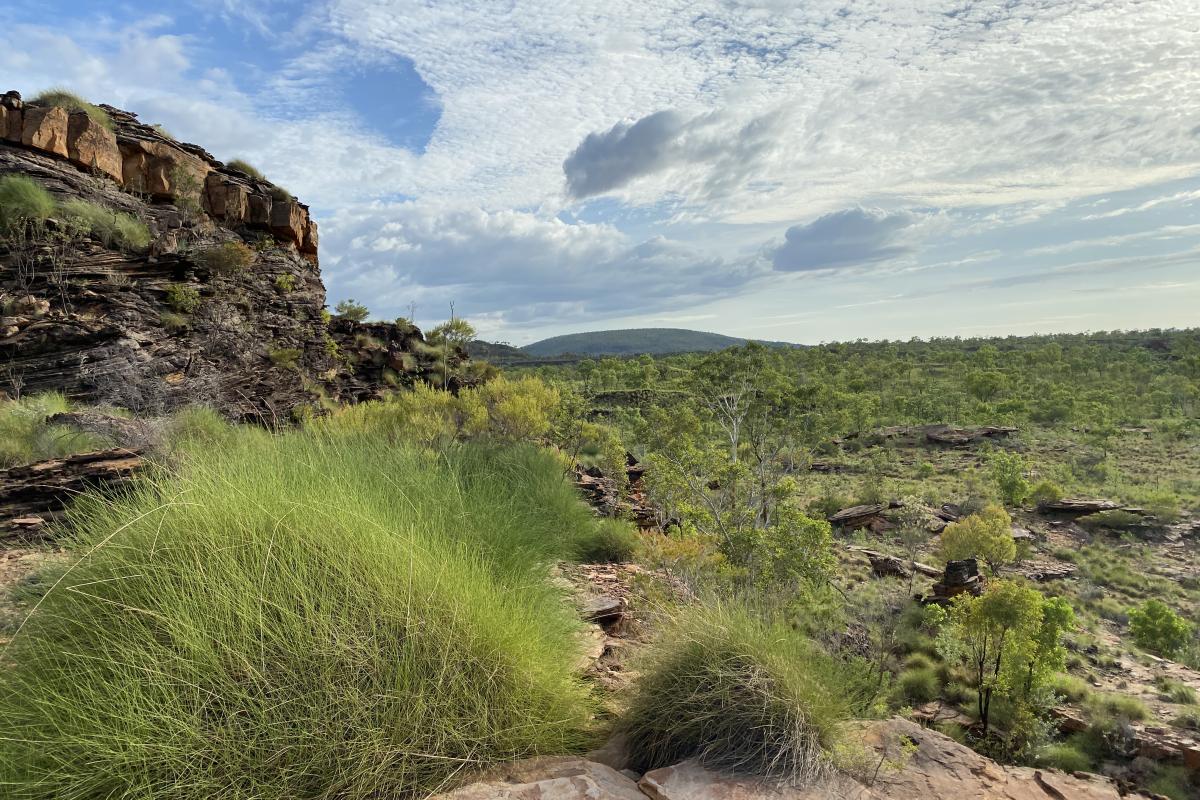
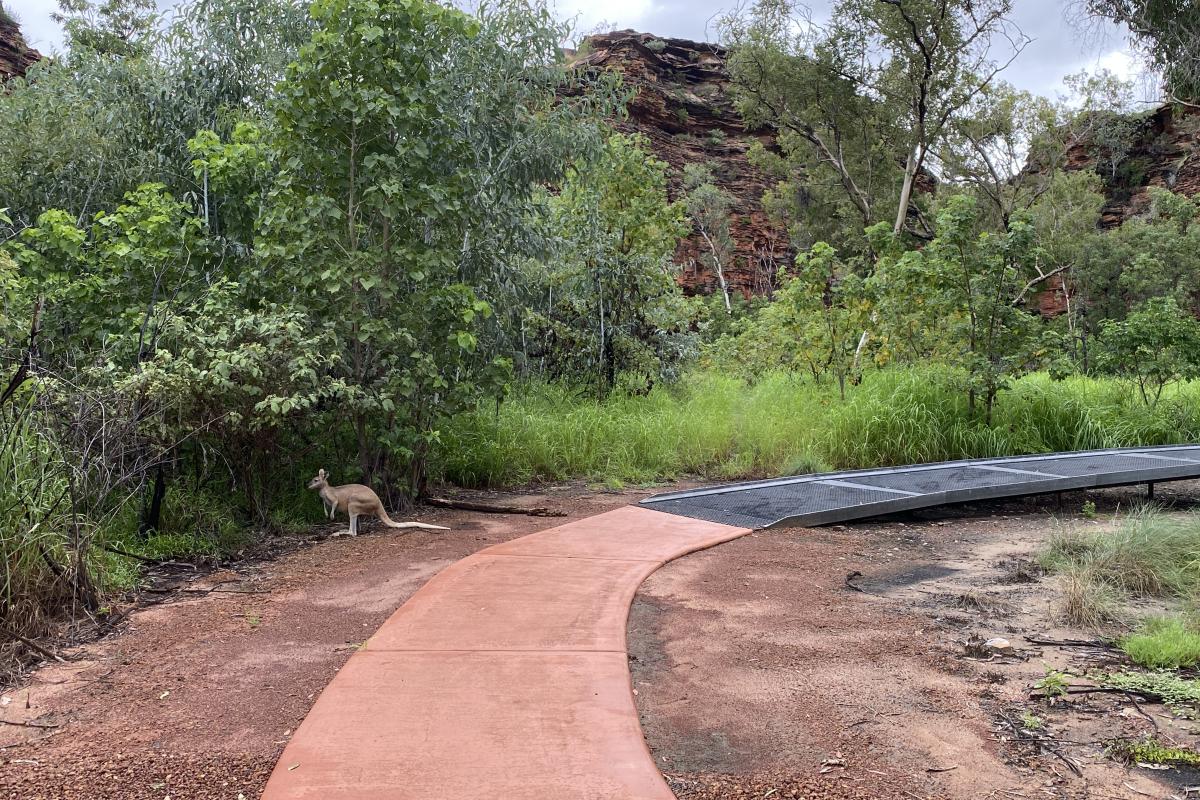
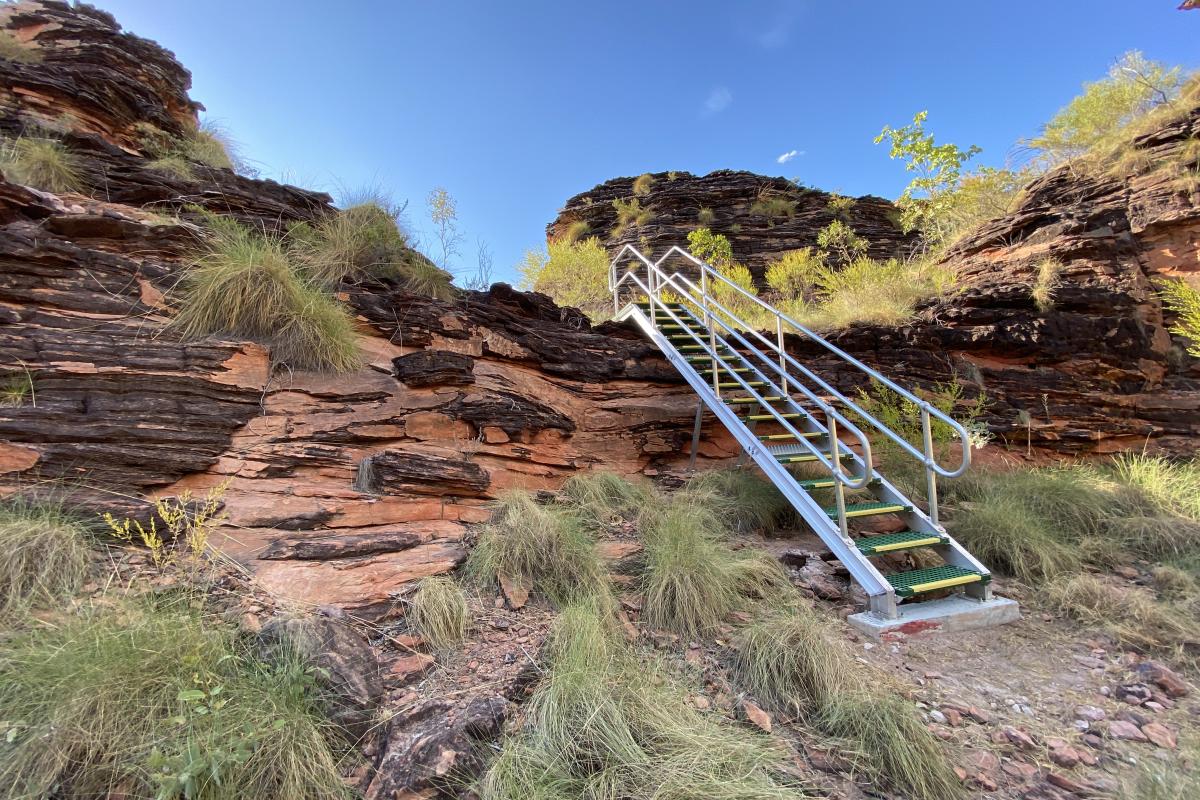

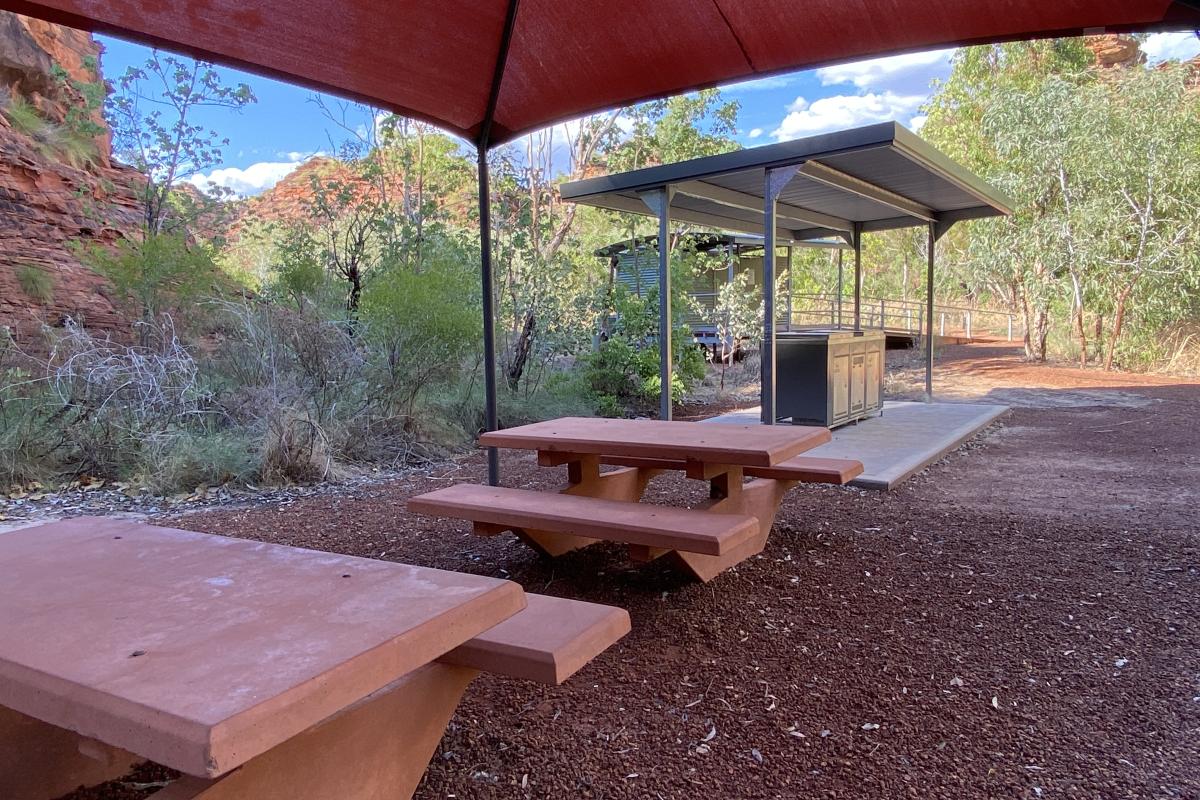
Every kid in a park
The Every Kid in a Park project, by Nature Play WA, connects kids with WA's greatest assets - the amazing outdoors!
It supports families of children of all abilities in accessing and enjoying local parks, nature reserves, beaches, and national parks all around Western Australia with free resources such as an app, an activity booklet and much more.
Discover family resources for exploring Mirima National Park at Nature Play WA.
Park feature article
Read the LANDSCOPE article about Mirima National Park.
Activities
 Bird watching
Bird watching
 Bushwalking
Bushwalking
 Picnicking
Picnicking
Plants, wildlife and fungi
Visit the Atlas of Living Australia for a list of species recorded in Mirima National Park.
Traditional Owners
We recognise and acknowledge Miriwoong and Gajerrong people as the Traditional Owners of Mirima National Park.
